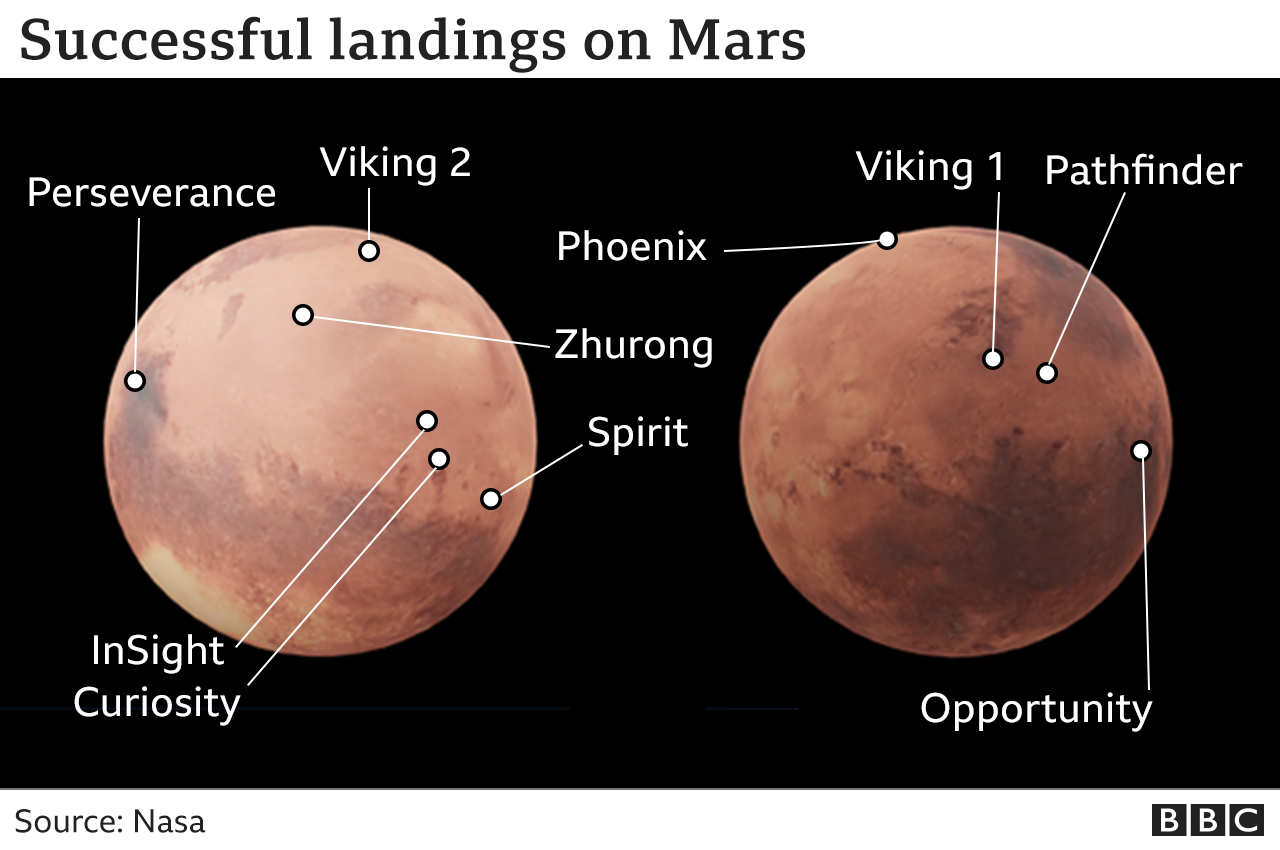China’s space agency has released video of its Zhurong rover trundling across the surface of Mars.
The pictures were acquired by a wireless camera that the robot had placed on the ground.
The new media release also includes sequences from Zhurong’s landing in May, showing the deployment of its parachute system and the moment of touchdown.
The six-wheeled robot is investigating a region known as Utopia Planitia.
The China National Space Agency (CNSA) says Zhurong has driven 236m in 42 Mars sols (as of 27 June). A sol is a Martian day. It lasts slightly longer than an Earth day, at 24 hours and 39 minutes.
The latest movies were relayed back to Earth via the Tianwen-1 satellite which orbits the Red Planet.
“The orbiter and the Mars rover are in good working condition, reporting safely from Mars to the party and the motherland, and sending distant blessings on the century of the party’s founding,” a CNSA press statement said.
A video release was expected, especially of the landing, which occurred on 14 May. Some preview stills looking up at the parachute system from the rover’s entry capsule were handed out last week.
In the movie version, however, we see the envelope inflate in the rarefied Martian atmosphere. We also see Zhurong and its landing platform drop away from the “backshell” of the capsule; and finally a look-down camera captures the moment of touchdown as the platform’s braking rocket motor blasts the surface clear of dust.
There are three videos on the surface. The first, presumably taken shortly after Zhurong put the wireless camera on the ground, shows the robot backing away.
The second video shows Zhurong wiggling its wheels while sitting next to its landing platform. The CNSA had previously released a still from this scene.
And, finally, the third video details the rover’s roll down the ramp that got it off the landing platform on to the surface. What’s interesting about this movie is that we get sound as well. We can hear the robot’s locomotion system in action.
The nature of Mars’ atmosphere means noises don’t sound quite the same as they do on Earth. They seem somewhat muffled
Scientists are hoping to get at least 90 Martian days of service out of Zhurong.
The robot looks a lot like the American space agency’s (Nasa) Spirit and Opportunity vehicles from the 2000s.
It weighs some 240kg. A tall mast carries cameras to take pictures and aid navigation; five additional instruments will investigate the mineralogy of local rocks and the general nature of the environment, including the weather.
Like the current American rovers (Curiosity and Perseverance), Zhurong has a laser tool to zap rocks to assess their chemistry. It also has a radar to look for sub-surface water-ice – a capability it shares with Perseverance.
Videos of the landing of Perseverance were released by Nasa shortly after its descent to the Martian surface on 18 February.





